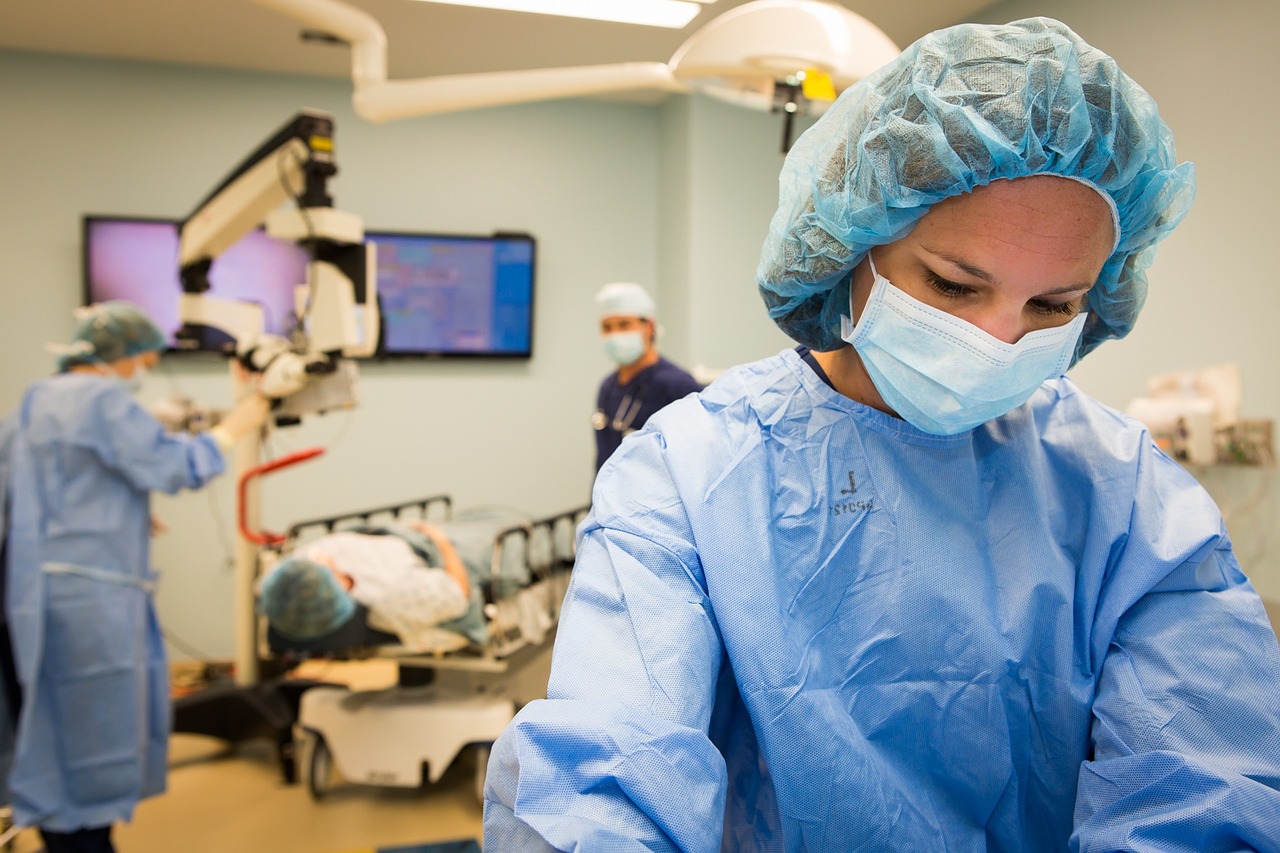Medical assisting is among America’s fastest-growing careers. While other fields are declining, the healthcare industry is growing by leaps and bounds. The U.S. Bureau of Labor Statistics projects the growth of medical assistant jobs at 18% in through next decade.
If you’re interested in the field but don’t have the time or money to attend a 4-year college, the job outlook couldn’t be brighter. And the better news is medical assistant training programs are available at CyberTex.
What Does a Medical Assistant Do?
Medical assistants perform clinical and administrative tasks in support of doctors, nurses, and administrators. Allied health professionals, their responsibilities include:
- Scheduling
- Triaging clinical calls
- Rooming patients
- Updating medical records
- Taking vital signs
- Giving medications
- Helping with treatments
- Diagnostic testing
- Wound care
- Phlebotomy
- Billing and coding
- Filing, faxing and correspondence
- Stocking exam rooms
- Ordering supplies
- Patient education
How Does Someone Become a Medical Assistant?
Most healthcare careers require a degree, but you can become a medical assistant with a vocational school diploma. Accessible to most students, programs are affordable, lifestyle-friendly, and include perks like job placement services.
Can you become a medical assistant without formal training? It’s possible but unlikely. Healthcare is a complex field, so most employers prefer applicants with higher education. With a diploma, you can become certified and expand your opportunities.
How Long is a Medical Assistant Program?
A medical assisting program takes as little as 45 weeks to complete, attending full-time. You’ll graduate with a diploma and qualify for the same jobs as your peers with degrees. Programs are short but intense and comprehensive, preparing you with the skills you need to succeed.
What Do You Learn During a Medical Assistant Program?
Medical assistant programs prepare students for entry-level jobs. Program topics include:
Medical Terminology
Medical speak is confusing until you learn how terms are constructed. Most are combinations of prefixes, root words and suffixes that are simple to define. Learning medical terminology helps you make sense of complex vocabulary without memorizing long lists of terms. You’ll need it to understand doctor’s notes, lab results, surgical reports, and insurance forms.
Anatomy and Physiology
Anatomy and physiology courses explore the structure and function of the human body. Topics include common medical disorders and treatment options.
Microbiology
Microbiology is the study of microbes, such as bacteria, viruses, parasites, and fungi. You’ll learn how dangerous pathogens spread and how you can stop them through sanitation, disinfection, and sterilization. Infection control is a top priority for medical assistants.
Pharmacology
Pharmacology delves into therapeutic drugs and how they’re used to prevent and treat diseases. Students explore medication classifications, indications, side effects, and interactions, so they can administer them safely.
Clinical Practices
Medical assistants manage a wide array of clinical tasks from taking EKGs to drawing blood samples. Working with the latest equipment, you’ll learn through a blend of classroom instruction, simulations, and hands-on practice, first on student volunteers and then on patients during clinical externships.
Students explore the ins and outs of laboratories and how to work safely. If you enjoy the science and technology medicine, you’ll thrive in this course.
Medical Law and Ethics
Few industries are as regulated as healthcare. From privacy laws to billing limitations, this course teaches medical assistants how to handle the legal and ethical dilemma common in healthcare environments.
Topics include privacy law, professional boundaries, mandatory reporting, and end-of-life issues. Students learn how to protect themselves, patients, and employers by following strict legal and moral standards.
Electronic Health Records and Communication
Medical records are now stored on computers instead of in file cabinets. There are two formats, electronic medical records (EMR) that contain a single doctor’s records and electronic health records (EHR) that aggregate data from all providers.
A medical assistant can access, update, and share data from a single portal. This course teaches you how to do it quickly and securely, while keeping with healthcare regulations.
Office Procedures
Medical assistants have administrative responsibilities linked to their clinical work. However, they also help around the office with the many tasks required to keep it running smoothly. Trained to handle most clerical procedures, medical assistants can handle recordkeeping, inventory management, insurance forms and more administrative support tasks.
Where Can You Work as a Medical Assistant?
One of the most rewarding aspects of a medical assisting career is its flexibility, you’re not limited to one type of work environment. Whether you prefer the consistent pace of a doctor’s office or the anything-goes excitement of a hospital, there’s a job for you.
Opportunities to specialize are also plentiful. If you prefer clinical duties to administrative tasks, you can become a certified clinical medical assistant. Or why not work for an insurance company if you have business experience?
With a diploma, the future is yours, and the sky’s the limit. Vocational school programs prepare you for success in these workplaces:
Doctor’s Offices
Most medical assistants are employed by doctors. Their unique blend of administrative and clinical skills is ideal for private practices. A fast-paced but more predictable environment than hospitals, it’s a good place for medical assistants to use the full range of their skills. Working in a doctor’s office, you’ll see the same patients consistently but will help them with a wide range of clinical and administrative issues.
Hospitals
Hospitals hire medical assistants for both clerical and clinical positions. You can use your billing and coding skills to work in the finance department, medical assistants also make perfect patient representatives. Or you can join the emergency room team where you can act as a patient liaison.
Clinical roles in in-patient departments are limited because of acuity. However, medical assistants are invaluable in outpatient departments from wound care to ambulatory surgery. Duties are similar to those in a private practice, but the pace is brisk, and you’ll see different patients every day.
If you like staying busy or trying new things, there are always lateral job opportunities in a large medical center, working in a hospital will be a great fit.
Clinics
Clinics are small medical facilities that offer specialized care for patients who don’t need to be hospitalized. Examples include urgent care centers, sleep labs, imaging centers, reproductive clinics, and wound care facilities.
If you’re intrigued by one particular facet of medicine, a position in a clinic may be just what the doctor ordered. You’ll see more of the cases you’re interested in while fine-tuning your skills. There are also specialty certifications for medical assistants in many of these clinical areas that can enhance your value as a job applicant and help you climb the career ladder.
Nursing Homes
Medical assistants can’t provide clinical care in a nursing home, but they can hold several non-clinical positions in the billing department or as unit clerks.
Jobs entail scheduling transportation, recordkeeping, billing, ordering supplies, giving tours and other ancillary duties. It’s a gratifying way to make a difference in the lives of seniors.
Insurance Companies and Health Maintenance Organizations
Every medical billing agent has a counterpart at an insurance company that validates their claims. Medical assistants can use their clinical and clerical expertise to do both.
Health maintenance organizations, HMOs, work similarly, but they take a more active role in preventive care. Medical assistants can work as patient representatives, answering calls and connecting them with resources.
Government Agencies
Government agencies are increasingly hiring medical assistants to fill administrative roles that require clinical expertise. Medicare, the nation’s largest insurer, has needs similar to a commercial insurance company.
Public health departments also hire medical assistants for both clerical and clinical roles such as immunizing children at free government-sponsored sites.
Final Thoughts
Becoming a medical assistant is one of the few ways to join the healthcare field that doesn’t require spending 4 years in college. So, get a diploma, secure your future, and make an impact.
Want to Learn More?
The Medical Assistant Training Program at CyberTex Institute of Technology takes great care of you by providing hands-on training, practical experience and the support it takes to get started in a medical assisting career without spending years in school. You will learn the basics of both clinical and administrative skills, and prepare to work in physician’s offices, hospitals, and other medical facilities.
Contact us today to learn more about our Austin and Killeen campuses.





